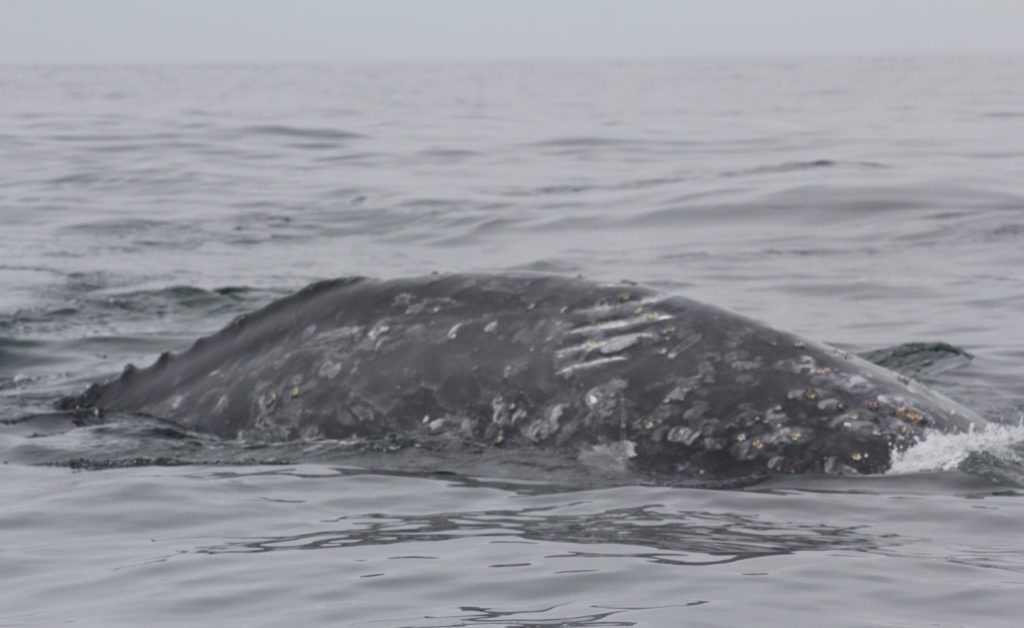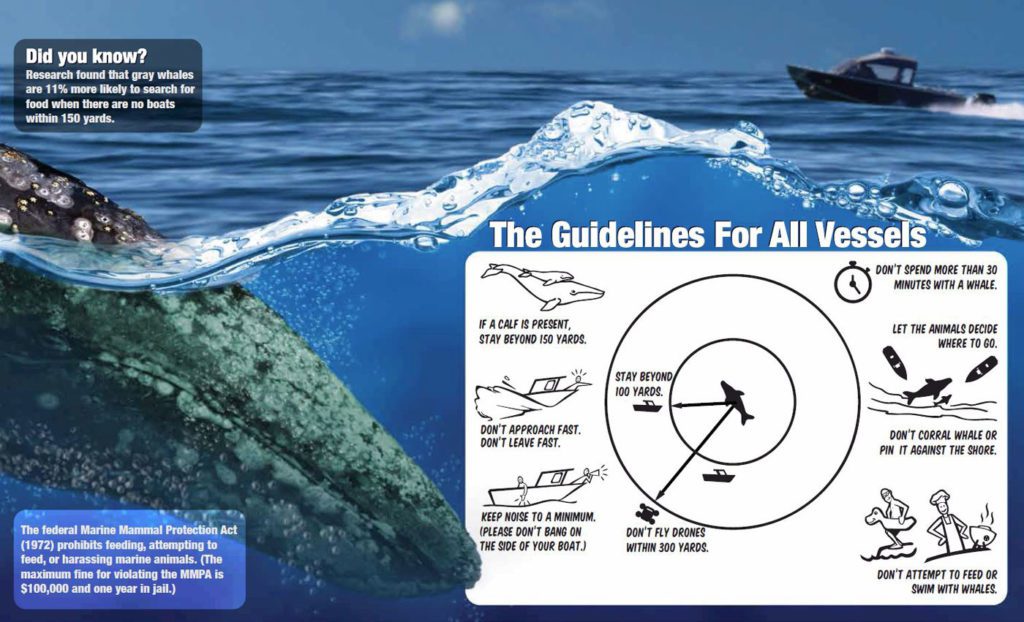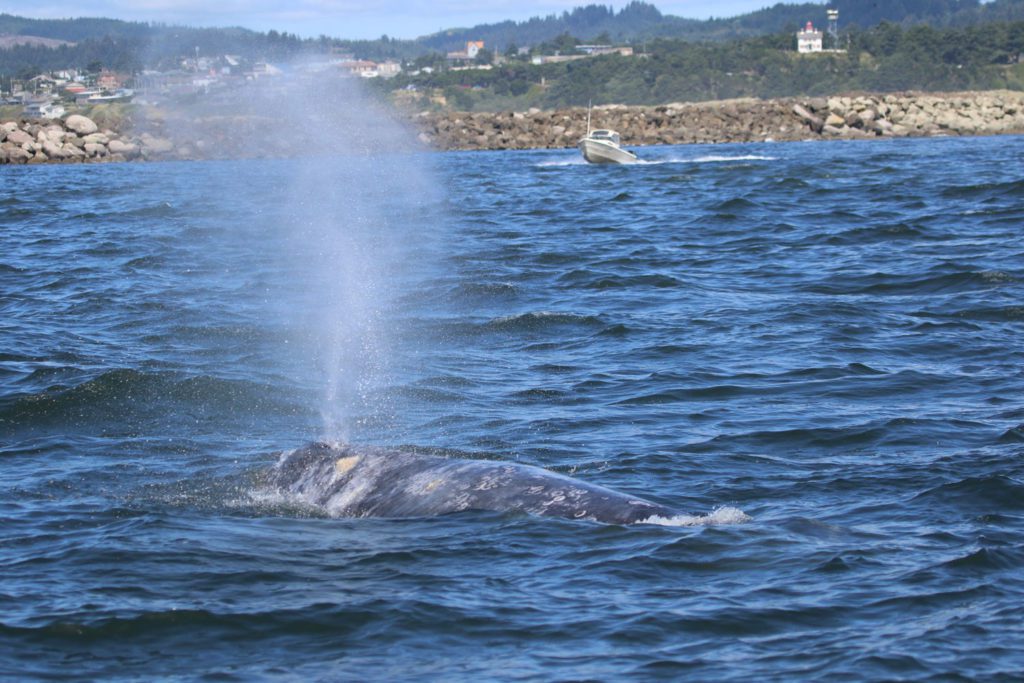Impacts of Vessel Traffic on Gray Whales
Small boat traffic in the coastal areas of Oregon can be heavy at times, particularly near ports during fishery openers. This boat traffic often has high overlap with the nearshore foraging habitat of gray whales. Many of the gray whales we study show scars of vessel strikes, like Equal, illustrating the direct impact of this overlap with boat traffic. Some vessel strikes can be lethal, while others can leave the whale injured for life, potentially causing infection and reducing their ability to move, feed, and travel efficiently. When a boat is travelling fast, a whale often does not have time to react or know which way to go to avoid collision.

We encourage boaters to drive slowly and be vigilant for whales when operating their vessels within 2 miles of shore, especially near reef and kelp habitats where these whales often feed. This is their dining room and hitting a whale would be stressful and sad for the whale, the boat, and the boater.

We worked with stakeholders along the Oregon coast to develop the WatchOutForWhales boat operation guidelines near whales and brochure. Check it out!

We have also documented an increase in whale stress levels with increased boat traffic. Ocean noise also increases with increased boat traffic. So, we do not know yet if this rise in whale stress relative to boat traffic is due to increased collision risk or increased noise, but we continue to research this question.
